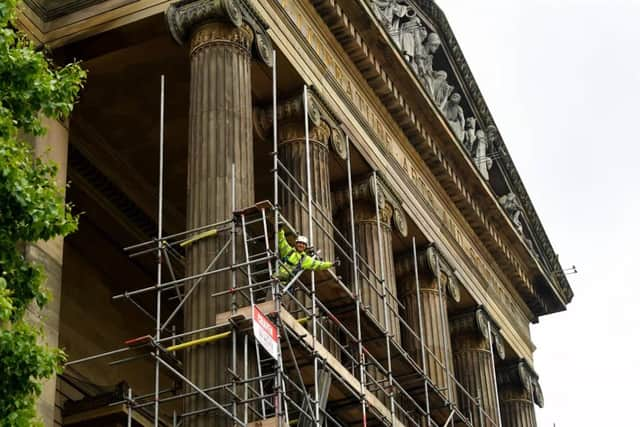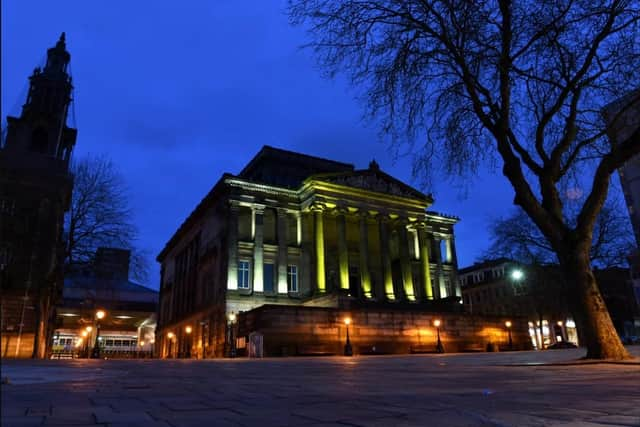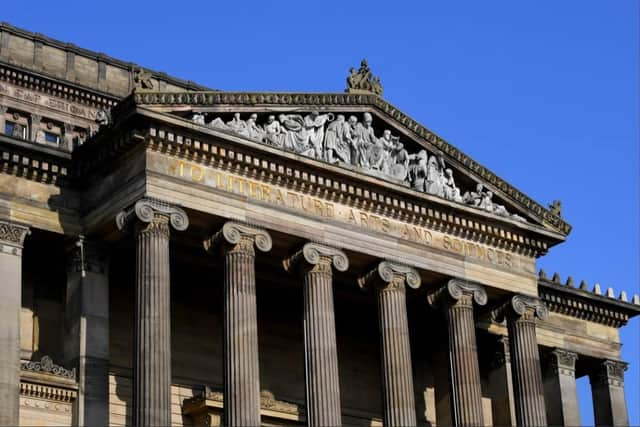Skylight plan at Preston’s Harris Museum sparks protest from conservationists
and live on Freeview channel 276
The heritage charity has objected to the replacement of a giant timber roof lantern by a double-glazed aluminium upgrade with UV resistant glass which it says could have a damaging impact on the Grade I Listed building.
Council chiefs, who have now formally approved the £10.7m facelift, say the work is necessary and any harm done to the treasured building would be minimal.
Advertisement
Hide AdAdvertisement
Hide AdBut the Victorian Society is adamant the large pyramid-shaped rooflight, which brings daylight into the central atrium of the Harris, should not be replaced unless absolutely necessary as the alterations could be "very noticeable and disproportionately harmful."


In a letter to the council, the Society says it supports most of the refurbishment work which is "much needed and will help to ensure the building's future."
But it adds: "We object, however, to the removal of the central timber rooflight and its replacement with an aluminium-framed system, on the basis that the current application contains absolutely no analysis of the harm to significance that might be caused either by possible loss of historic fabric or a change in the character of one of the museum’s most significant internal spaces.
"In the conservation plan, which is submitted as part of the application, the central space of the atrium is identified as having ‘exceptional’ significance. The roof lantern crowns this space and is itself crowned by the rooflight.


Advertisement
Hide AdAdvertisement
Hide Ad"This rooflight is not the most elaborate or striking element of the design, but it is highly visible, both at a distance and from relatively close (from the Egyptian Gallery), and is one of the key structural elements which creates the atrium’s light-filled character.
"The profiles of its frame and glazing bars make a definite contribution to the architectural effect, especially at high levels."
The Victorian Society, which fights to protect and preserve buildings from the Victorian and Edwardian eras, says it is unclear if the timber atrium is the original from the time the Harris was opened in 1893.
It admits: "It may be that the existing rooflight is anyway a later replacement of a lost original, in which case the harm from loss of fabric will be slight.


Advertisement
Hide AdAdvertisement
Hide Ad"There is, however, no mention of this in the application documents, and if the framing is original then its loss will cause harm to the significance of the Harris through the loss of original joinery.
"The change of material also has the potential to cause harm to significance through an associated change in design.
"The proposed replacement is in aluminium, a material with very different properties from timber and hence its own particular methods of construction which can lead to great differences from timber in aesthetic affect.
"In the context of the atrium taken as a whole any such change is unlikely to be overwhelming, but it could still be very noticeable, and disproportionately harmful.
Advertisement
Hide AdAdvertisement
Hide Ad"There is no argument that the intervention is necessary. We can easily imagine that the timber frame might make it difficult to accommodate the proposed double glazing, (but) we find it harder to believe that it is structurally compromised and beyond repair."